
Companies selling bundled products might require the ability to have a single sales order for the bundled product, while its multiple components are transacted and sometimes shipped separately. For instance, a multi-element sales order for a system could contain the system itself and added services such as training and warranty for the system. In such a scenario, the business might require the ability to transact the individual components (system, training and warranty), while presenting a single price to the customer.
The Armanino bundles functionality in D365 lets you do this within Dynamics 365 F&O. In a bundle scenario, the sales order gets entered and managed for the bundled item (SKU), while the shipping and accounting transactions will be associated to the items that compose the bundle. Inventory and revenue recognition will be tracked on the individual components, but the customer-facing forms will present a single (bundle) price.
To set up and item as a bundle, choose Released product details > General fast tab. Set the Bundle slide to Yes.
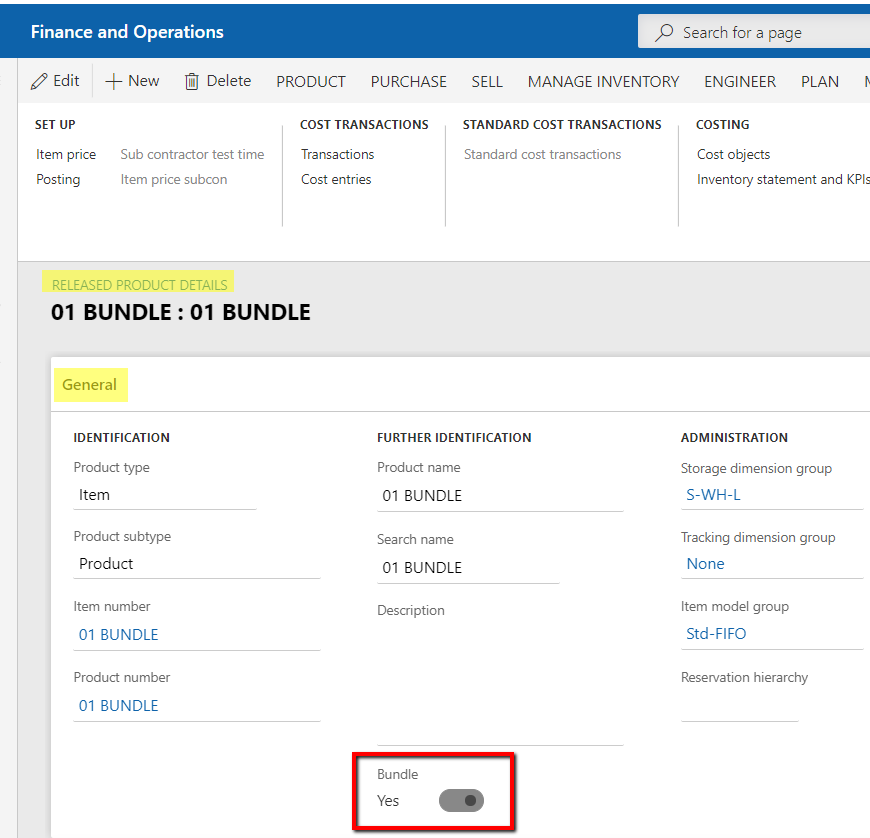
The bundle item also requires an approved and active BOM. In this example, 01 BUNDLE contains two components: 01 ITEM and 01 SERVICE 2.
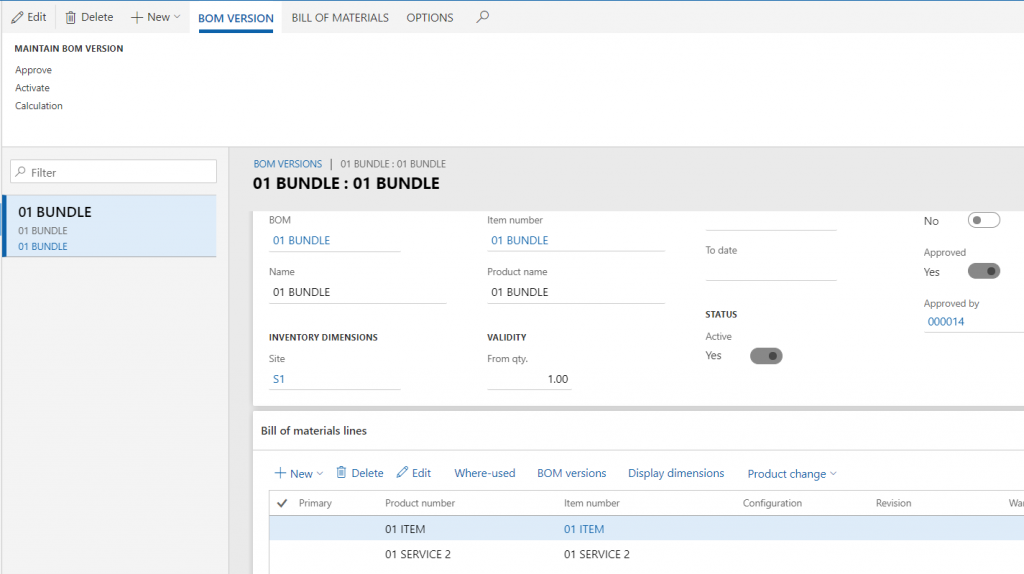
To support the distribution of the bundle price across components, they require a base selling price (or a trade agreement) to be assigned to them. The revenue contribution for each component will be the total item sales price divided by the total extended sales value of all BOM components. The contribution of each component will be (BOM qty * sales price) / [sum all (BOM qty * sales price].
In this scenario, 01 ITEM has a base sales price of $900.00; for 01 SERVICE 2, it's $100.00.
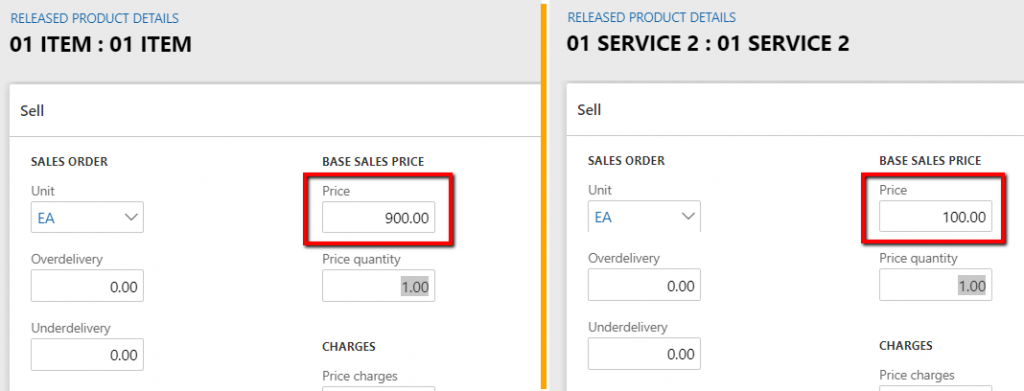
The contribution for item 01 ITEM will be 900/(900+100) = 0.90. Item 01 ITEM receives 90% of the bundle net amount. The contribution for item 01 SERVICE 2 is 100/(900+100) = 0.10. Item 01 SERVICE receives 10% of the bundle net amount.
The sales order will be placed for the bundle part. Assume the bundle is placed with a total price of $80.00.

Upon confirmation, the item identified as the bundle item gets automatically expanded onto the sales order and the bundle components get populated as sales order lines. Each element will receive a portion of the bundle price based on their individual contributions. In addition to that, the original bundle amount will be stored in a Bundle Net Amount field.
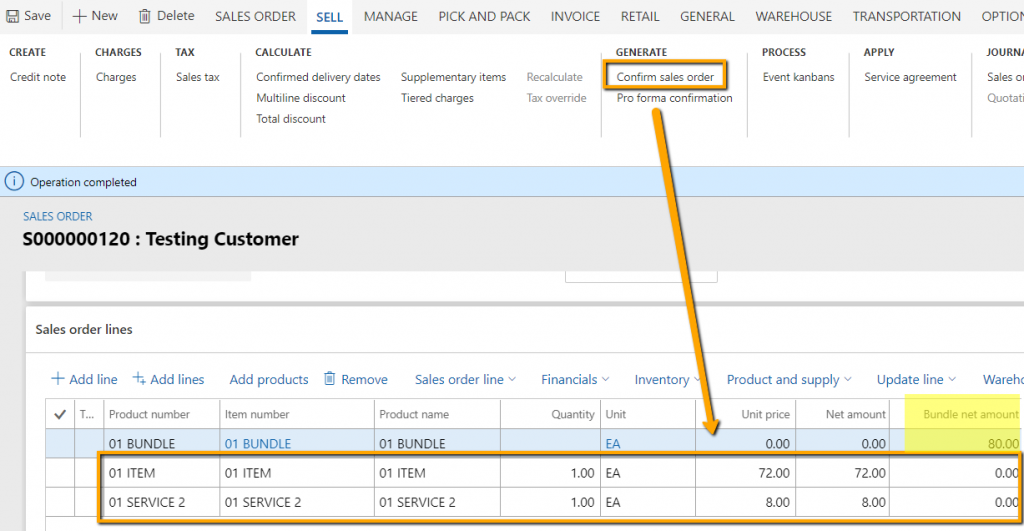
The individual bundle components will be transacted for the sales order shipment, as well as the packing slip and invoice vouchers.

In turn, the bundle item is used on the sales order acknowledgement and invoices, giving the client the visibility of a single bundle price.
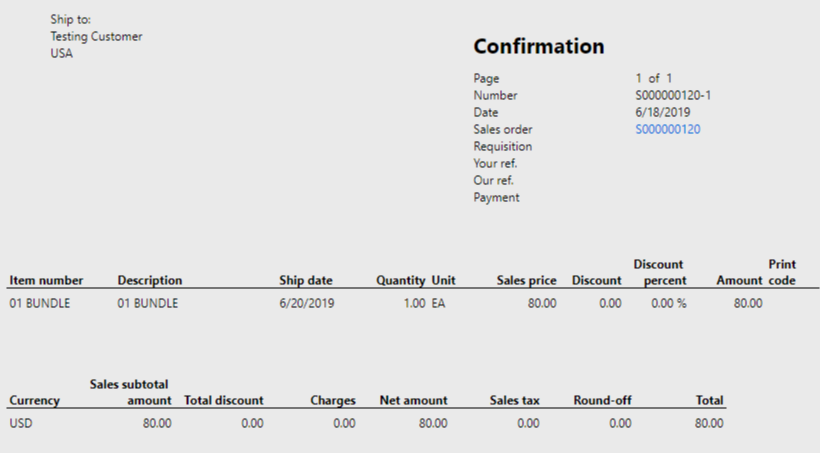
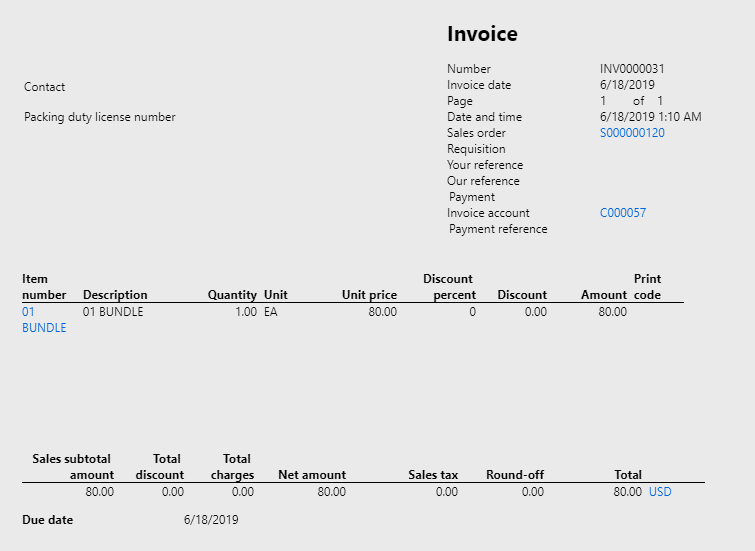
The good news is that bundles functionality is part of the Armanino Revenue Management module, which has been acquired by Microsoft and will be included in future D365 releases!
Learn more about our Revenue Recognition module and other customized modules for D365 in the Armanino Marketplace.


